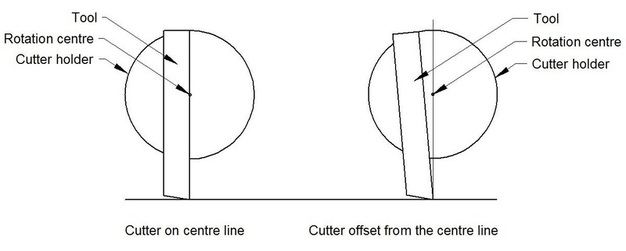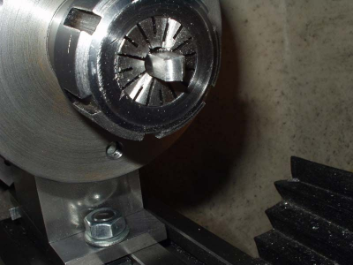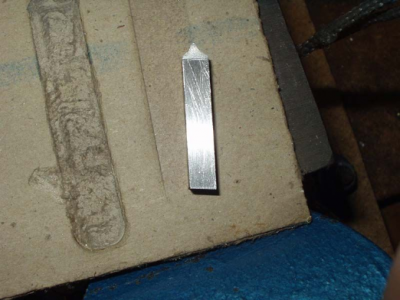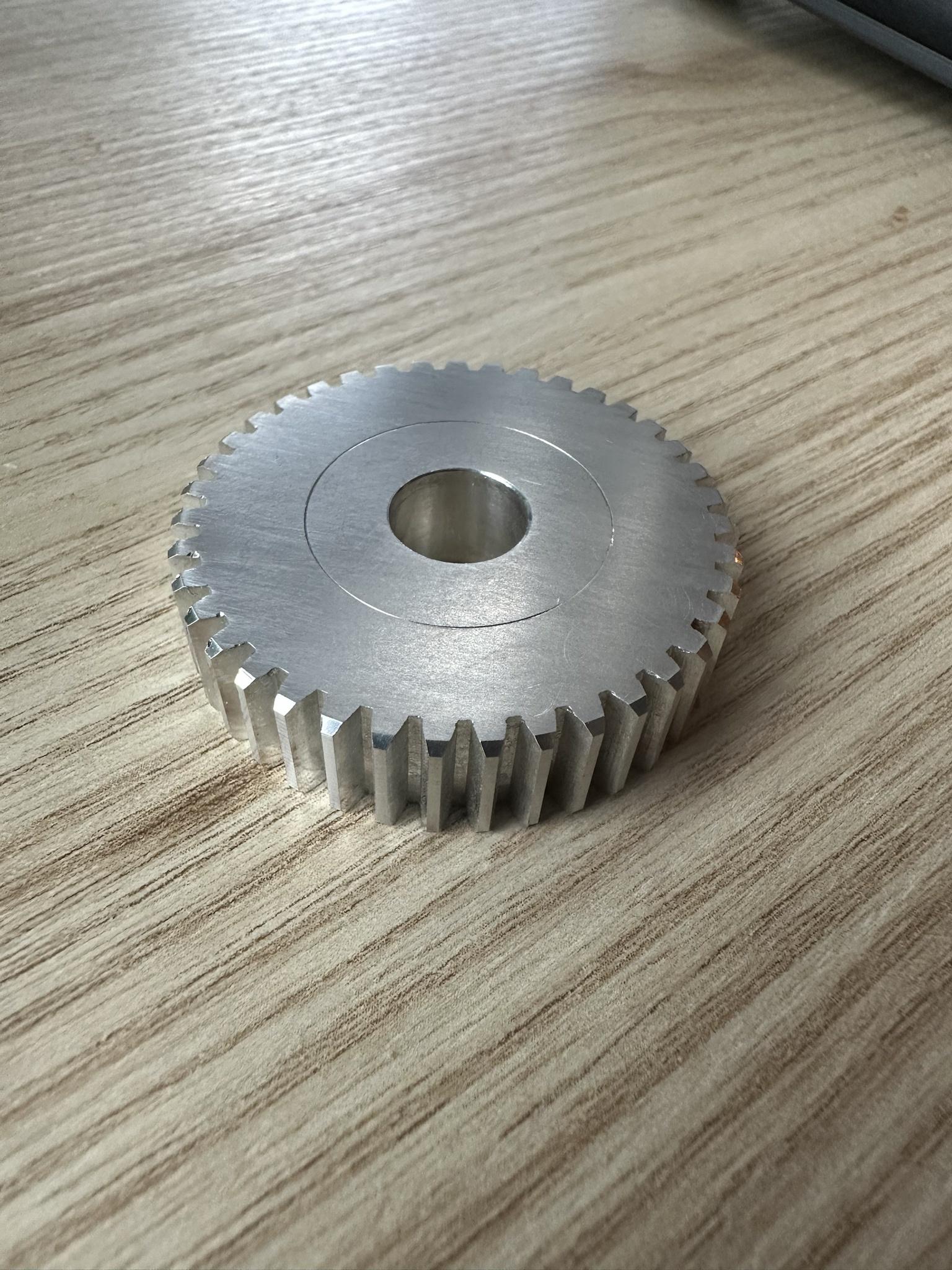Hi all,
I'm hoping someone can help educate me on cutting geometry. I've been working on a project to make some change gears for my Emco V10p lathe and I used the button method to create a very respectable looking mod1 fly cutter out of some O1 and a holder that puts the cutter on its rotational center (as is normally recommended). It works really well and cuts some great looking gears. The problem I'm trying to solve now is when trying it out on aluminum the cuts were very jarring for my little mill. It looked and sounded much more like "slapping" than cutting.
The mill I'm using is the 4 speed geared head milling attachment for the V10p and I'm concerned about the abuse the fly cutter is putting on the phenolic gears so I've been looking for a way to reduce the cutting forces on harder materials. I came across this post by Mike about offsetting the cutter to create some rake and how it greatly reduced the cutting forces in steel. Here is Mike's illustration of the solution (my holder currently matches the example on the left):

Mike's post says the drawback to this offset is the cutter will create an elliptical cut in the gear. I'm new to the hobby and not an engineer so I'm having trouble wrapping my head around what he means about an elliptical cut and how this offset creates it. Furthermore I can't see how his solution of tilting the blank 5 degrees when creating the cutter counteracts that. Can anyone elaborate?
Another method I've come across is to tilt the blank 5 degrees in the vise and take a skim cut across the cutting face to create the rake angle. Does this introduce the same elliptical issue?


I'm hoping someone can help educate me on cutting geometry. I've been working on a project to make some change gears for my Emco V10p lathe and I used the button method to create a very respectable looking mod1 fly cutter out of some O1 and a holder that puts the cutter on its rotational center (as is normally recommended). It works really well and cuts some great looking gears. The problem I'm trying to solve now is when trying it out on aluminum the cuts were very jarring for my little mill. It looked and sounded much more like "slapping" than cutting.
The mill I'm using is the 4 speed geared head milling attachment for the V10p and I'm concerned about the abuse the fly cutter is putting on the phenolic gears so I've been looking for a way to reduce the cutting forces on harder materials. I came across this post by Mike about offsetting the cutter to create some rake and how it greatly reduced the cutting forces in steel. Here is Mike's illustration of the solution (my holder currently matches the example on the left):

Mike's post says the drawback to this offset is the cutter will create an elliptical cut in the gear. I'm new to the hobby and not an engineer so I'm having trouble wrapping my head around what he means about an elliptical cut and how this offset creates it. Furthermore I can't see how his solution of tilting the blank 5 degrees when creating the cutter counteracts that. Can anyone elaborate?
Another method I've come across is to tilt the blank 5 degrees in the vise and take a skim cut across the cutting face to create the rake angle. Does this introduce the same elliptical issue?





